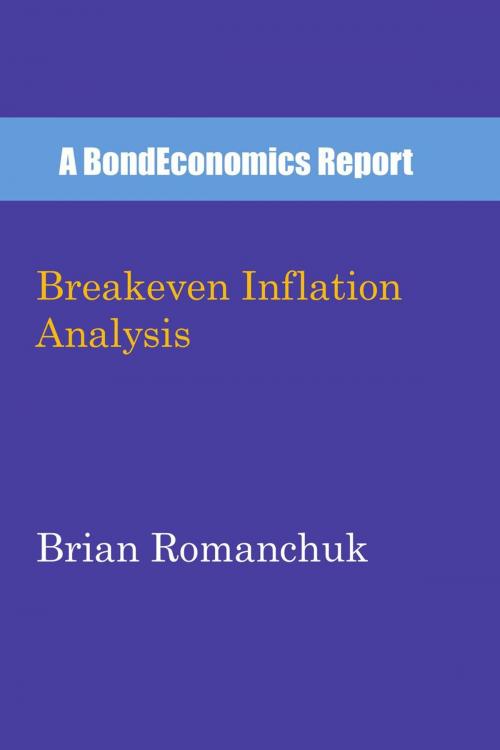Breakeven Inflation Analysis
Business & Finance, Economics, Inflation, Finance & Investing, Interest| Author: | Brian Romanchuk | ISBN: | 9781386778295 |
| Publisher: | BondEconomics | Publication: | October 29, 2018 |
| Imprint: | Language: | English |
| Author: | Brian Romanchuk |
| ISBN: | 9781386778295 |
| Publisher: | BondEconomics |
| Publication: | October 29, 2018 |
| Imprint: | |
| Language: | English |
The great inflation of the 1970s in the developed countries provoked strong economic (and political) reactions. In finance, investors searched for ways to protect themselves from inflation. The United Kingdom launched the first modern inflation-linked bonds in 1981. In addition to being of interest to investors looking for protection against inflation, these bonds also provide a market-based measure of inflation expectations. Since investors have "skin in the game," the resulting forecasts might be better than a purely survey-based inflation forecast. More reliable inflation forecasts should be useful for policymakers that aim to control inflation.
This report discusses the breakeven inflation rate that is implied by pricing in the fixed income markets. For those with a casual interest in the subject, it is probably good enough to view those inflation breakeven rates as a market-implied forecast for inflation. However, if one wants to delve into the analysis, it is necessary to come to grips with the complications in the subject. Is the forecast biased? Are there technical factors in the bond market that affect pricing? The objective of this report is to offer an intermediate-level introduction to these issues. The target audience is either those with an interest in finance and who are unfamiliar with inflation-linked bonds or economists who want to understand better the factors that affect inflation breakeven rates.
The great inflation of the 1970s in the developed countries provoked strong economic (and political) reactions. In finance, investors searched for ways to protect themselves from inflation. The United Kingdom launched the first modern inflation-linked bonds in 1981. In addition to being of interest to investors looking for protection against inflation, these bonds also provide a market-based measure of inflation expectations. Since investors have "skin in the game," the resulting forecasts might be better than a purely survey-based inflation forecast. More reliable inflation forecasts should be useful for policymakers that aim to control inflation.
This report discusses the breakeven inflation rate that is implied by pricing in the fixed income markets. For those with a casual interest in the subject, it is probably good enough to view those inflation breakeven rates as a market-implied forecast for inflation. However, if one wants to delve into the analysis, it is necessary to come to grips with the complications in the subject. Is the forecast biased? Are there technical factors in the bond market that affect pricing? The objective of this report is to offer an intermediate-level introduction to these issues. The target audience is either those with an interest in finance and who are unfamiliar with inflation-linked bonds or economists who want to understand better the factors that affect inflation breakeven rates.















